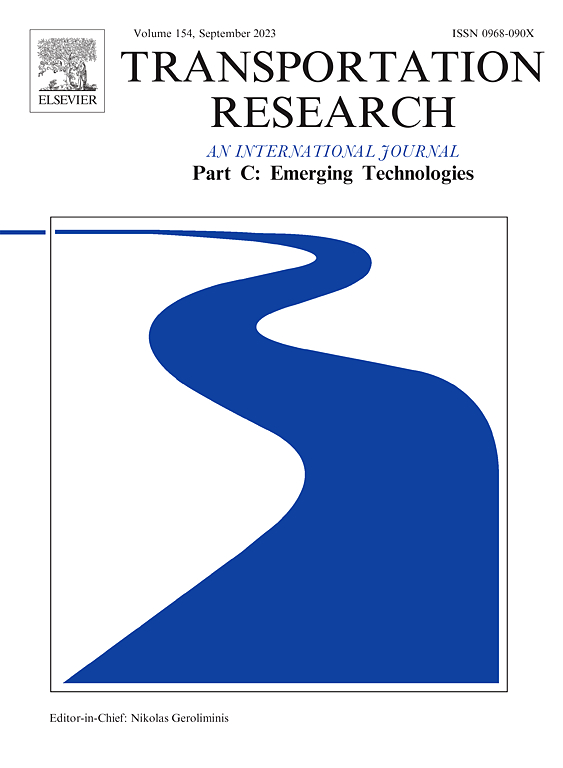Multi-agent trajectory prediction at unsignalized intersections: An improved generative adversarial network accounting for collision avoidance behaviors
IF 7.6
1区 工程技术
Q1 TRANSPORTATION SCIENCE & TECHNOLOGY
Transportation Research Part C-Emerging Technologies
Pub Date : 2025-02-01
DOI:10.1016/j.trc.2024.104974
引用次数: 0
Abstract
Accurate trajectory prediction for multiple agents (i.e., vehicles, bicyclists, and pedestrians) is the premise of launching proactive interventions, which can serve as an effective way to improve traffic safety at unsignalized intersections. The distinctive characteristic of unsignalized intersections lies in their disorderly traffic organization, prompting traffic agents to be extra vigilant towards other agents to prevent collisions. As such, the primary focus of multi-agent trajectory prediction lies in acquiring a deep understanding of their interactive behavior patterns when encountering potential collisions. To achieve this, this study proposes an improved generative adversarial network (GAN) that can properly model collision avoidance behaviors of multiple agents when predicting their trajectories. Specifically, attention pooling modules are employed to capture interactions among multiple agents. A graph convolution network (GCN) based collision extraction module is applied to identify potential collisions and model the collision avoidance behaviors of traffic agents. Experimental results on InD dataset demonstrate that the proposed framework attained a more accurate and reliable performance for multi-agent trajectory prediction. In different interactive scenarios, such as when vehicles yield or don’t yield, the results illustrated via the Distance-velocity (DV) diagram display a significant level of robustness. Furthermore, the conflict points, count of dangerous interactions, and Post-Encroachment Time, as computed from these predicted trajectories, also align well with the ground truth. This indicates that the proposed framework effectively captures the pattern of collision avoidance behaviors of multiple agents, which has potential to serve as an effective way to enhance traffic safety at unsignalized intersections.
求助全文
约1分钟内获得全文
求助全文
来源期刊
CiteScore
15.80
自引率
12.00%
发文量
332
审稿时长
64 days
期刊介绍:
Transportation Research: Part C (TR_C) is dedicated to showcasing high-quality, scholarly research that delves into the development, applications, and implications of transportation systems and emerging technologies. Our focus lies not solely on individual technologies, but rather on their broader implications for the planning, design, operation, control, maintenance, and rehabilitation of transportation systems, services, and components. In essence, the intellectual core of the journal revolves around the transportation aspect rather than the technology itself. We actively encourage the integration of quantitative methods from diverse fields such as operations research, control systems, complex networks, computer science, and artificial intelligence. Join us in exploring the intersection of transportation systems and emerging technologies to drive innovation and progress in the field.

 求助内容:
求助内容: 应助结果提醒方式:
应助结果提醒方式:


